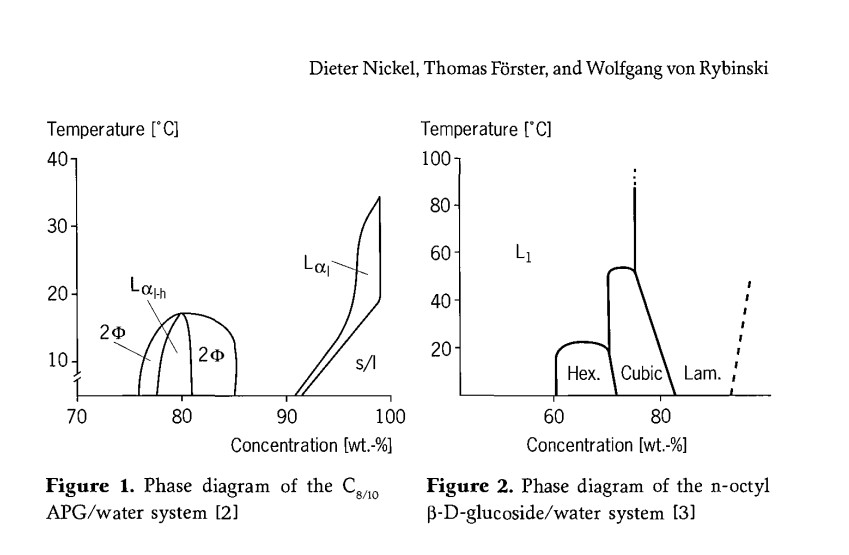Physicochemical Properties of Alkyl Polyglycosides-Phase behavior
Binary systems
The excellent performance of surfactants is essentially due to specific physical and chemical effects. This applies on the one hand to the interface properties and on the other hand to behavior in solution, such as phase behavior. Compared with fatty alcohol ethoxylates (alkyl polyglycol ethers),the physicochemical parameters of alkyl glycosides have been relatively little studied so far. In these studies, alkyl polyglycosides have been found to have significant properties that, in some cases, are significantly different from other non-ionic surfactants. The results obtained so far are summarized as follows. The significant differences associated with the behavior of fatty alcohol ethoxylates were particularly striking.
Compared with systematic studies of fatty alcohol ethoxylates, up to now only a few studies Involving substances of different purity have been conducted into the phase behavior of alkyl Polyglycosides. When comparing the results obtained, it is important to keep in mind that the Presence of secondary components has a considerable influence on details of the phase diagrams. Nevetheless, basic observations can be made about the phase behavior of alkyl glycosides.The phase behavior of a technical C8-10 Alkyl polyglycoside(C8-10 APG) is illustrated in (Figure1). At temperatures above 20℃, the C8-10 APG is appear up to very high concerntrations in an isotropic phase of which the viscosity increases considerably. A birefringent lyotropic phase of nematic texture is formed at around 95% by weight, which changes at around 98% by weight into a cloudy two-phase region of liquid and solid alkyl polyglycoside. At relatively low temperatures, a lamellar liquid crystalline phase is additionally observed between 75 and 85% by weight.
For a pure short-chain n-octyl-β-D-glucoside, the phase diagram was investigated in detail by Nilsson et al. and Sakya et al. the individual phases were closely characterized by such Methods as NMR and small angle X-ray scattering(SAXS). Figure 2 show the phase sequence. At low temperatures, a hexagonal, a cubic and finally a lamellar phase are observed with increasing surfactant content. Differences in relation to the C8-10 alkyl polyglycoside phase Diagram (Figure 1) can be explained by difference alkyl chain length cuts and by a different Number of glucose units in the molecule (see below).
Post time: Oct-20-2020






